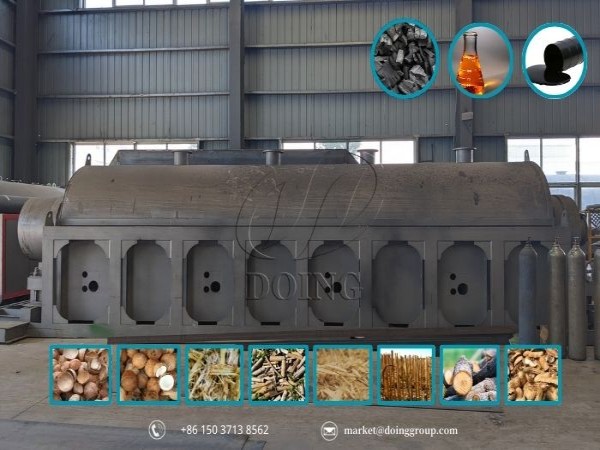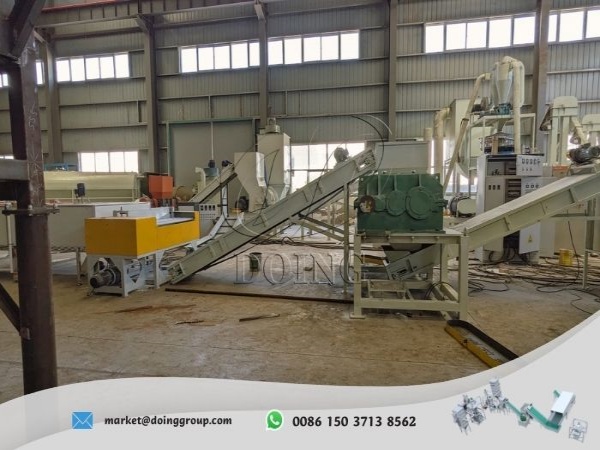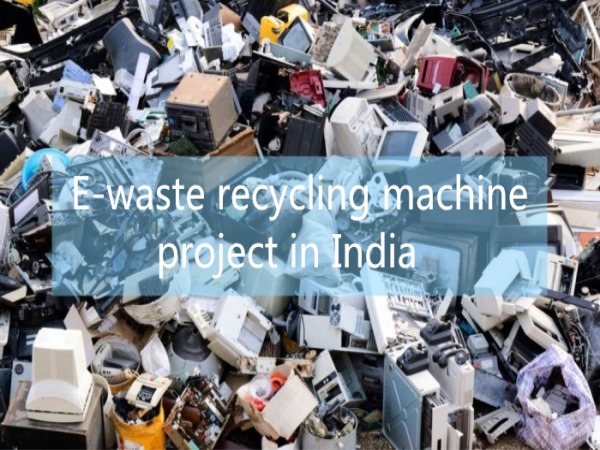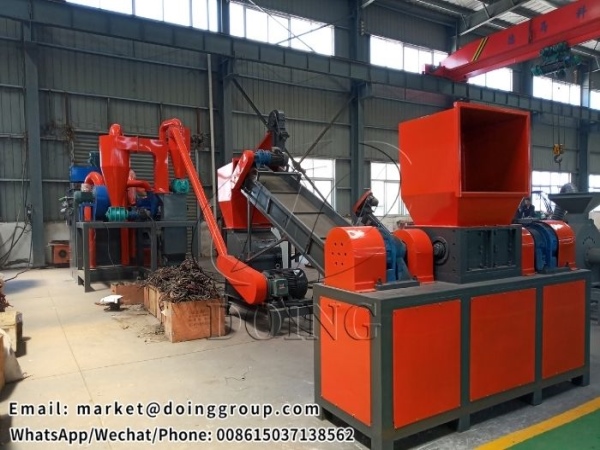 WhatsApp
WhatsApp

DOING HOLDINGS
Henan Doing Environmental Protection Technology Co., Ltd
E waste recycling machine manufacturer
- WhatsApp: +86 150 3713 8562
- Email: market@doinggroup.com
How to make charcoal step by step?
 May 27, 2025
May 27, 2025- Industry News
- Leave a message
- Chat online
Making charcoal through a carbonization process in a plant involves heating organic materials, such as wood, in the absence of oxygen to drive off volatile compounds and leave behind carbon-rich material. This method is also known as pyrolysis and is applicable to various raw materials for producing biochar or charcoal, including but not limited to wood, fruit shells (such as coconut shells, palm shells), biomass waste (such as corn cobs, rice husks, straw, bamboo), etc.
Here’s a step-by-step guide on how to make charcoal using a carbonization plant:
1. Preparation
Select Feedstock: Choose the right raw material based on the location of your charcoal carbonization project, which can be wood chips, sawdust, coconut shells, or other biomass. Ensure it's clean and free from contaminants.
Natural resources and agricultural byproducts vary greatly in different regions. Locally abundant, easily accessible and low-cost raw materials should be given priority to improve economic efficiency and sustainability. For example, in Southeast Asia (such as Vietnam and Thailand), rice husks, coconut shells and palm shells are abundant resources and can be used as a priority. In Africa, nut shells (such as cashew shells, peanut shells) and sugarcane bagasse are ideal raw materials because of their high bulk density and good carbonization efficiency.
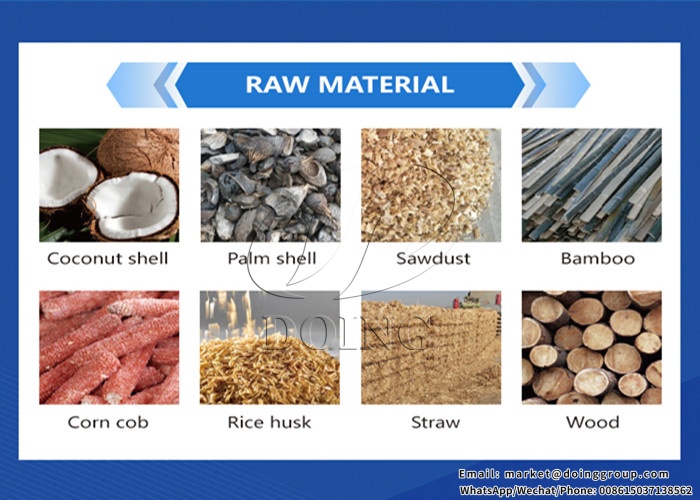 Carbonization raw materials for charcoal making
Carbonization raw materials for charcoal making
Crushing and drying: After the raw materials are prepared, they need to be pre-processed, including crushing and drying.
The purpose of crushing the raw materials is to ensure that the materials are evenly heated and efficiently carbonized. After drying, the materials can undergo pyrolysis more efficiently and obtain higher quality carbonized products. DOING charcoal carbonization plant supports multiple material inputs and has higher flexibility. At the same time, crushers and dryers can be equipped to pre-process the raw materials.
2. Loading
The prepared raw materials are then loaded into the carbonization furnace or reactor. The design of the plant may vary, but usually includes a loading mechanism for safely introducing the material to prevent air (oxygen) from entering. DOING charcoal carbonization plant can achieve continuous feeding, effectively improve production efficiency, reduce manpower requirements, and more stable product quality through automation, stabilization and efficiency.
3. Carbonization Process
Heating: The heat source heats the reactor, and the raw materials undergo pyrolysis in the carbonization furnace and are eventually converted into charcoal, combustible gas and other by-products. The temperature range for effective carbonization usually falls between 400°C and 600°C. It's crucial that this process happens in an oxygen-limited environment to prevent combustion.
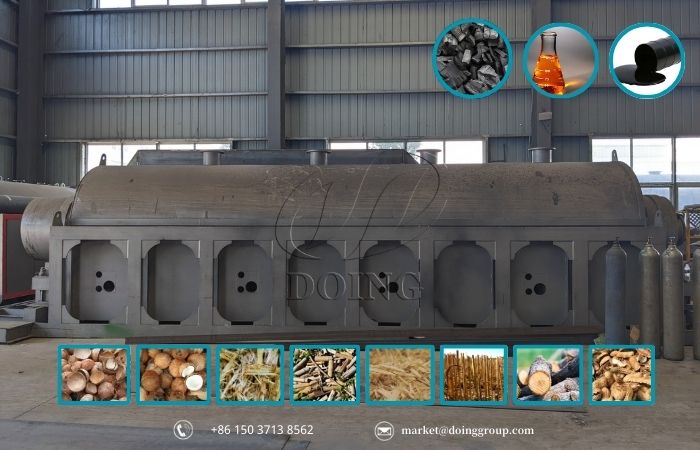 Carbonization plant to make charcoal
Carbonization plant to make charcoal
Monitoring: During the carbonization process, the temperature and pressure in the reactor are continuously monitored to ensure optimal carbonization conditions, which are adjusted according to the specific requirements of the raw materials. For this purpose, DOING charcoal making machine is specially equipped with a PLC intelligent control system.
4. Pyrolysis Products Management
As the material is heated, gases such as methane, hydrogen and carbon monoxide are released. The DOING equipment can collect these gases through the heat recovery system and use them as fuel to further heat the reactor and provide heat for it, thereby improving energy utilization. Depending on the raw materials and process conditions, bio-oil may also be produced. The bio-oil can be separated and stored for later use or sold.
5. Cooling
Once the carbonization process is complete, allow the charcoal to cool down inside the reactor or transfer it to a cooling system. Rapid cooling should be avoided as it can cause the charcoal to crack or become brittle. DOING charcoal carbonization plant uses a water cooling system to reduce the temperature of charcoal. The main purpose of the cooling stage is to reduce the temperature of charcoal, prevent charcoal from spontaneous combustion, and ensure the quality and safety of the product.
After cooling, the charcoal is removed from the reactor for eventual collection and storage. Screening removes any undersized particles or fines. It is important to store the charcoal in a dry place to prevent moisture absorption, which can affect its quality.
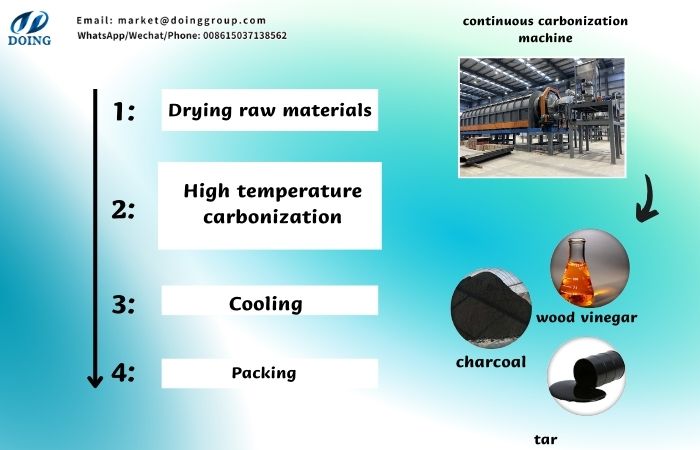 Charcoal making steps of DOING charcoal carbonization plant
Charcoal making steps of DOING charcoal carbonization plant
By following these steps, you can efficiently make high-quality charcoal while minimizing the impact on the environment. It is also important to choose professional equipment. As a professional carbonization plant manufacturer, DOING charcoal carbonization plant provides an efficient, environmentally friendly and sustainable solution for charcoal making. The specific details of each step may vary depending on the specific technology and scale of your carbonization machine. If you want to know more details, please contact us immediately. Our team of experts is ready to provide you with the best tailor-made solution.
Contact Us
- Email:
- Tel/WhatsApp:
News

Process Workflow and Equipment for Lithium Battery Recycling

Lithium-Ion Batteries Recycling Industry: Current Status and Future Prospects Review

DOING Signs Contract with Ghana Client for 5-Ton Biochar Production Equipment

The DOING Straw Continuous Charcoal Making Machine Process Principle and Process

DOING 100-150kg/h circuit board recycling machine order in Zambia
Contact Us
If you want to get more details, you can send E-mail to market@doinggroup.com. Or you can consult our professional engineers and specialized sales team by leaving a message in below form. We will contact you ASAP.
